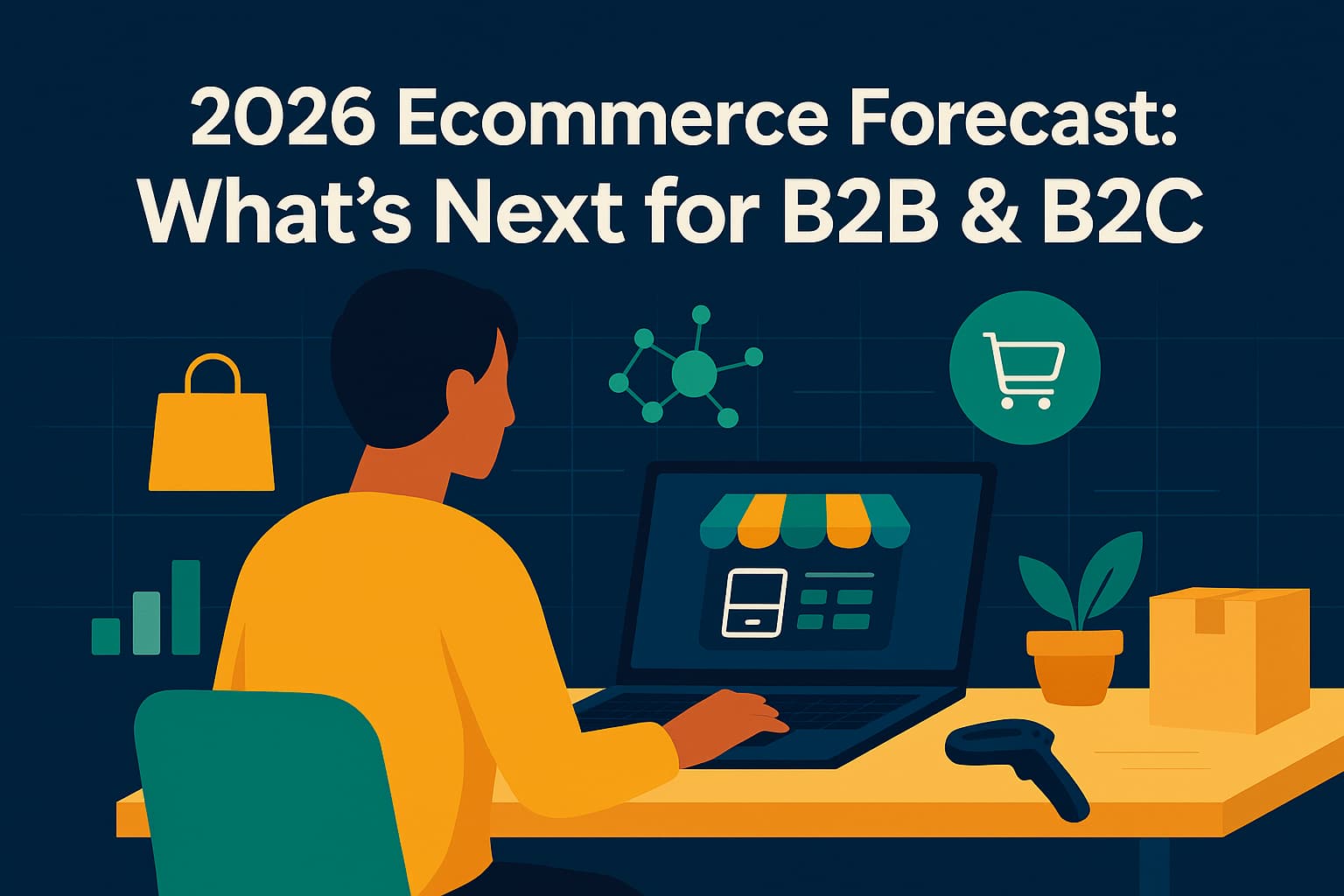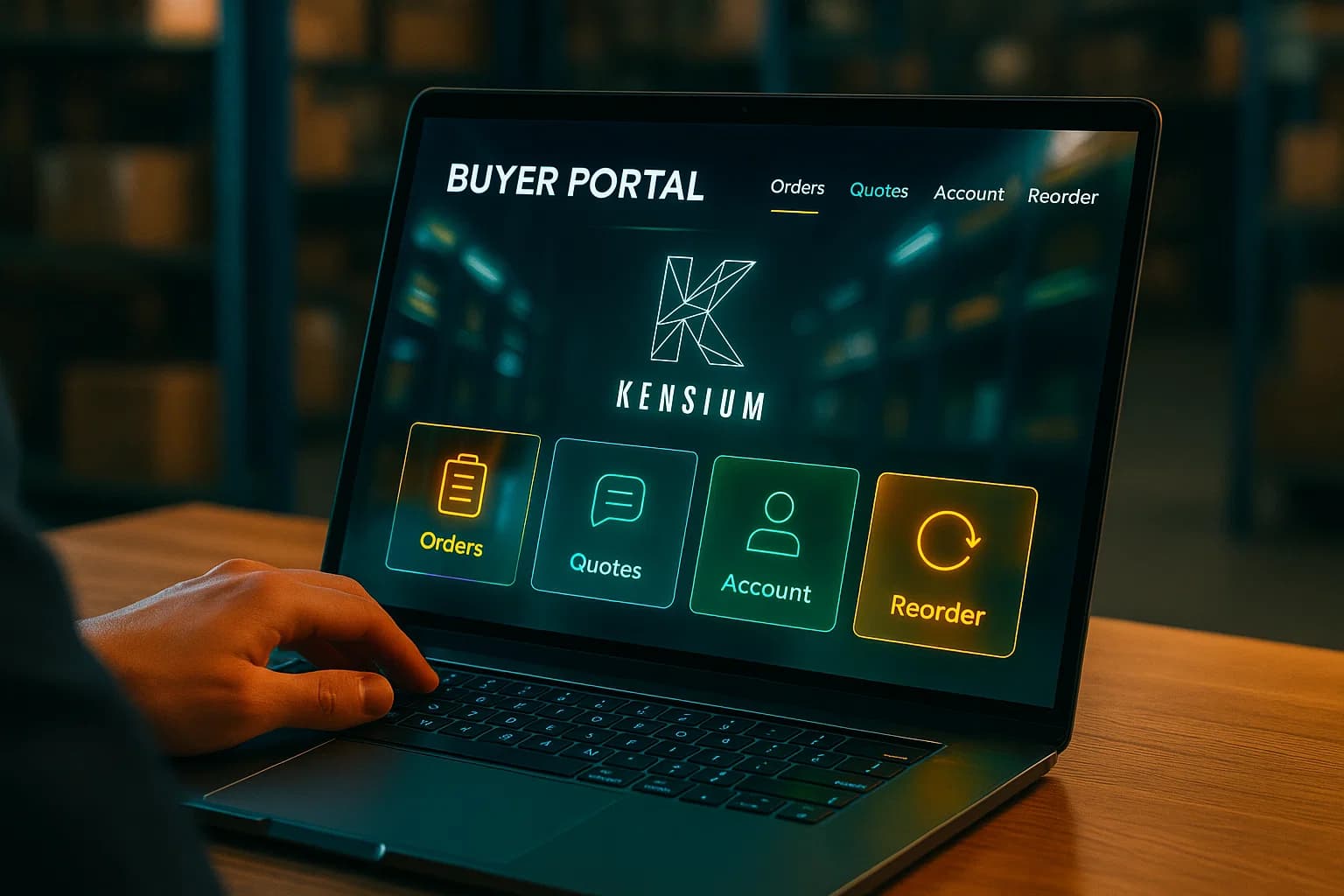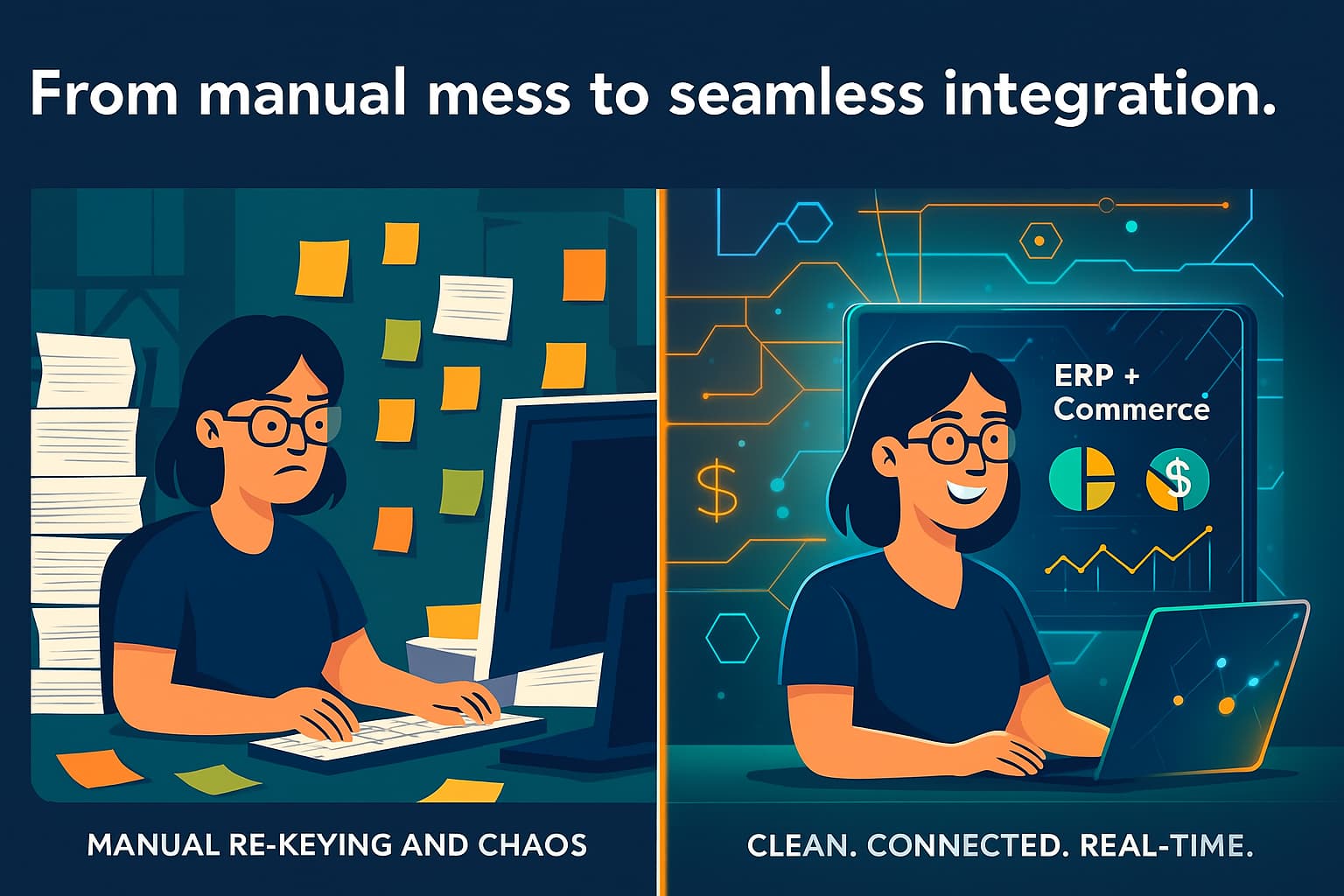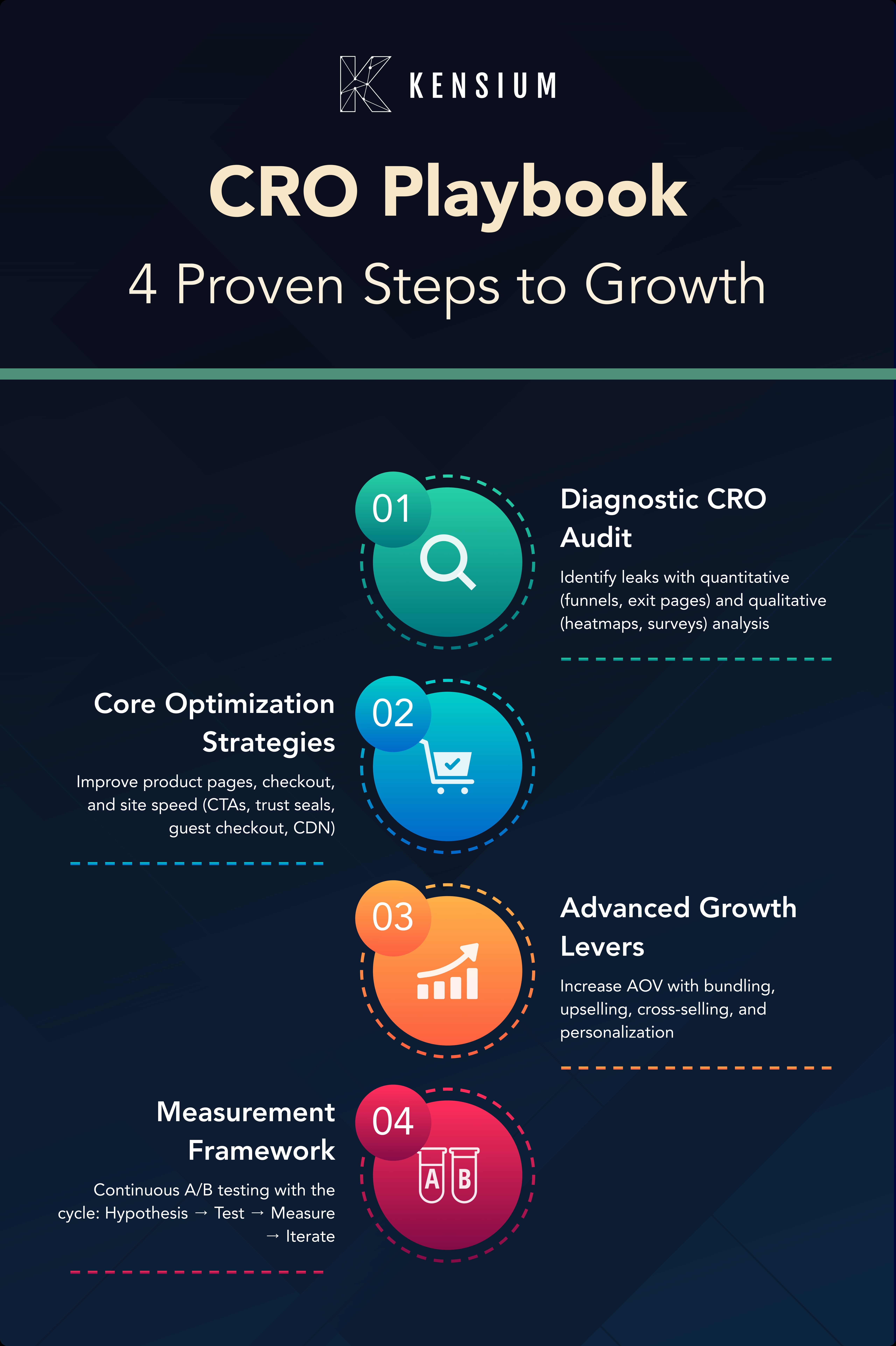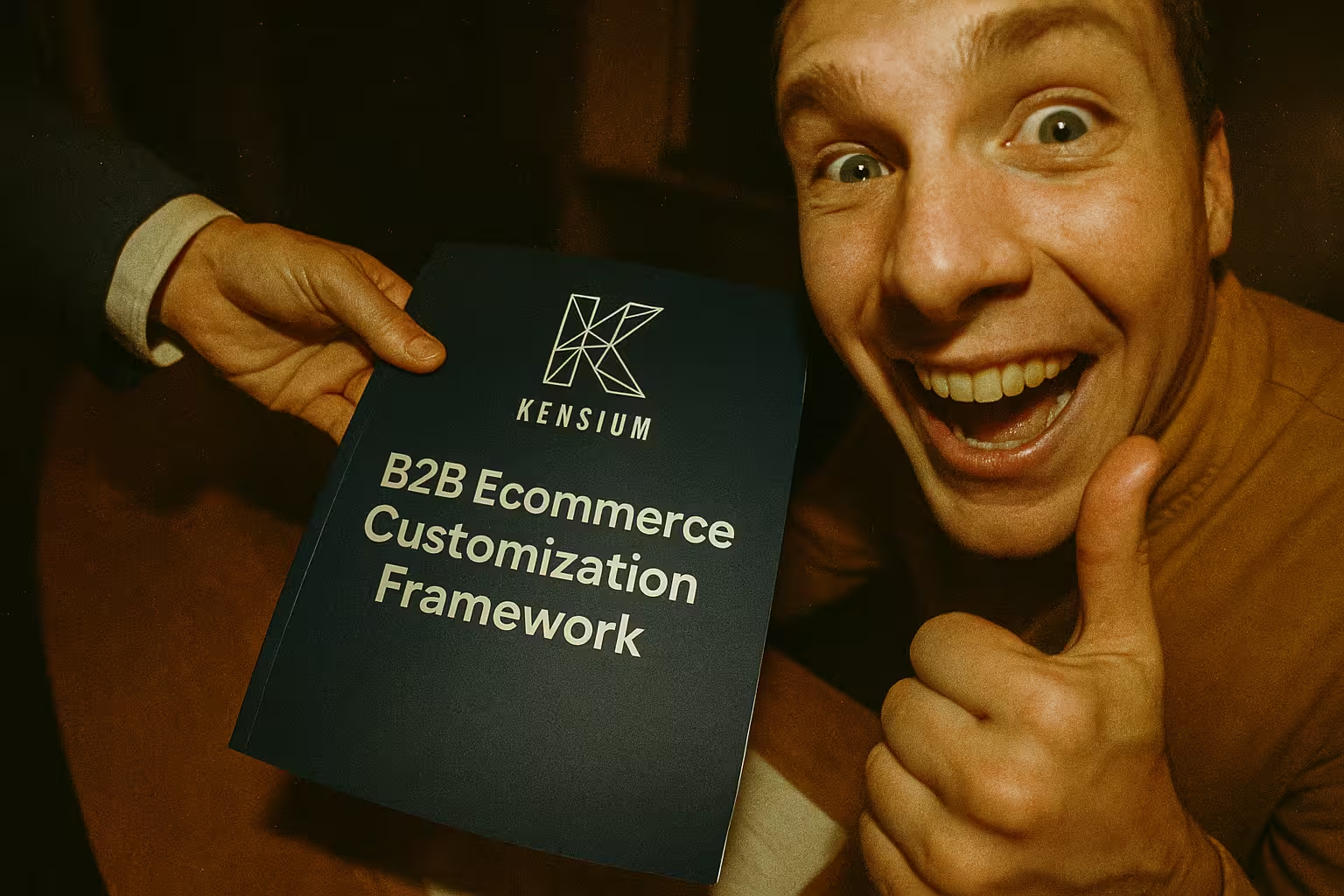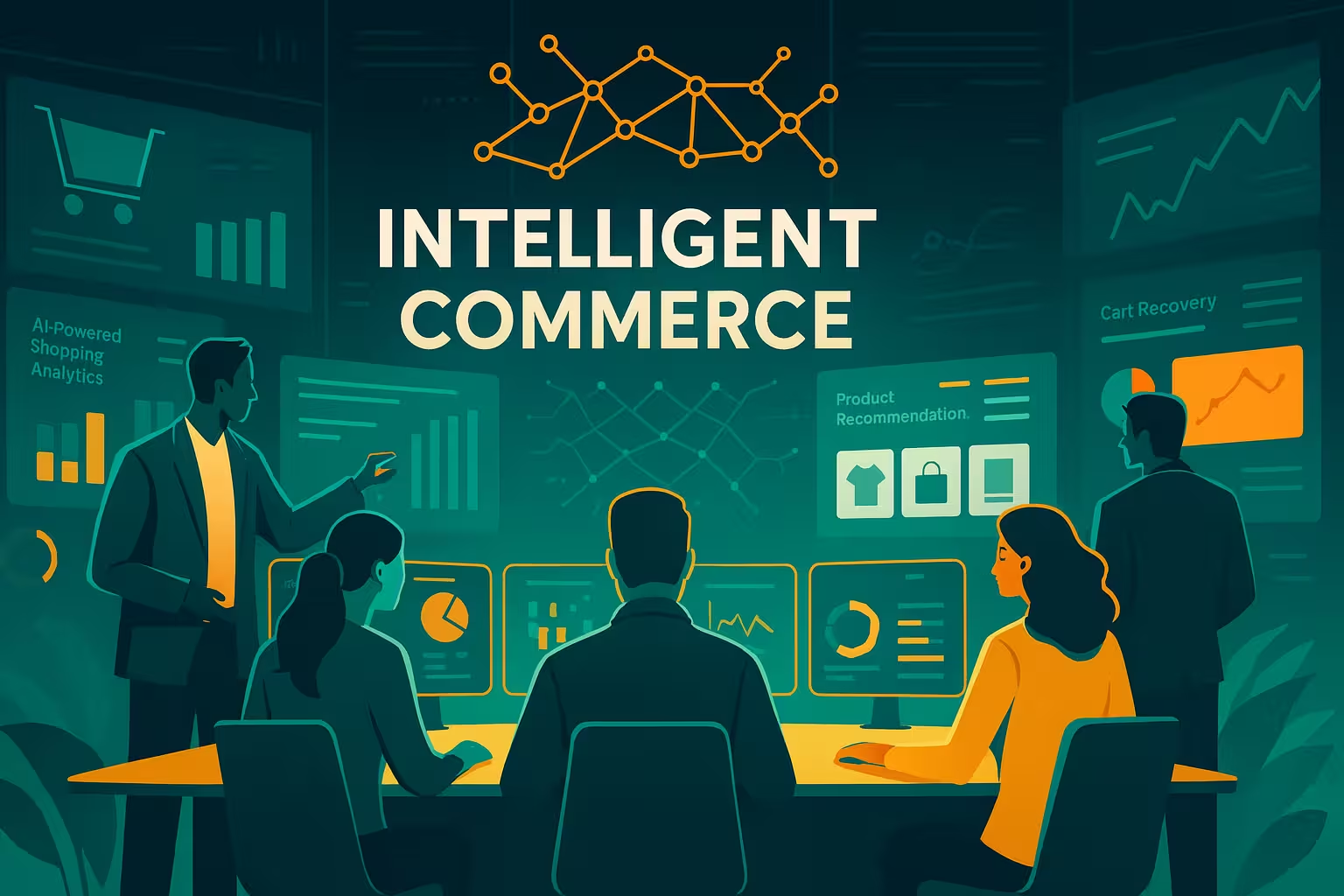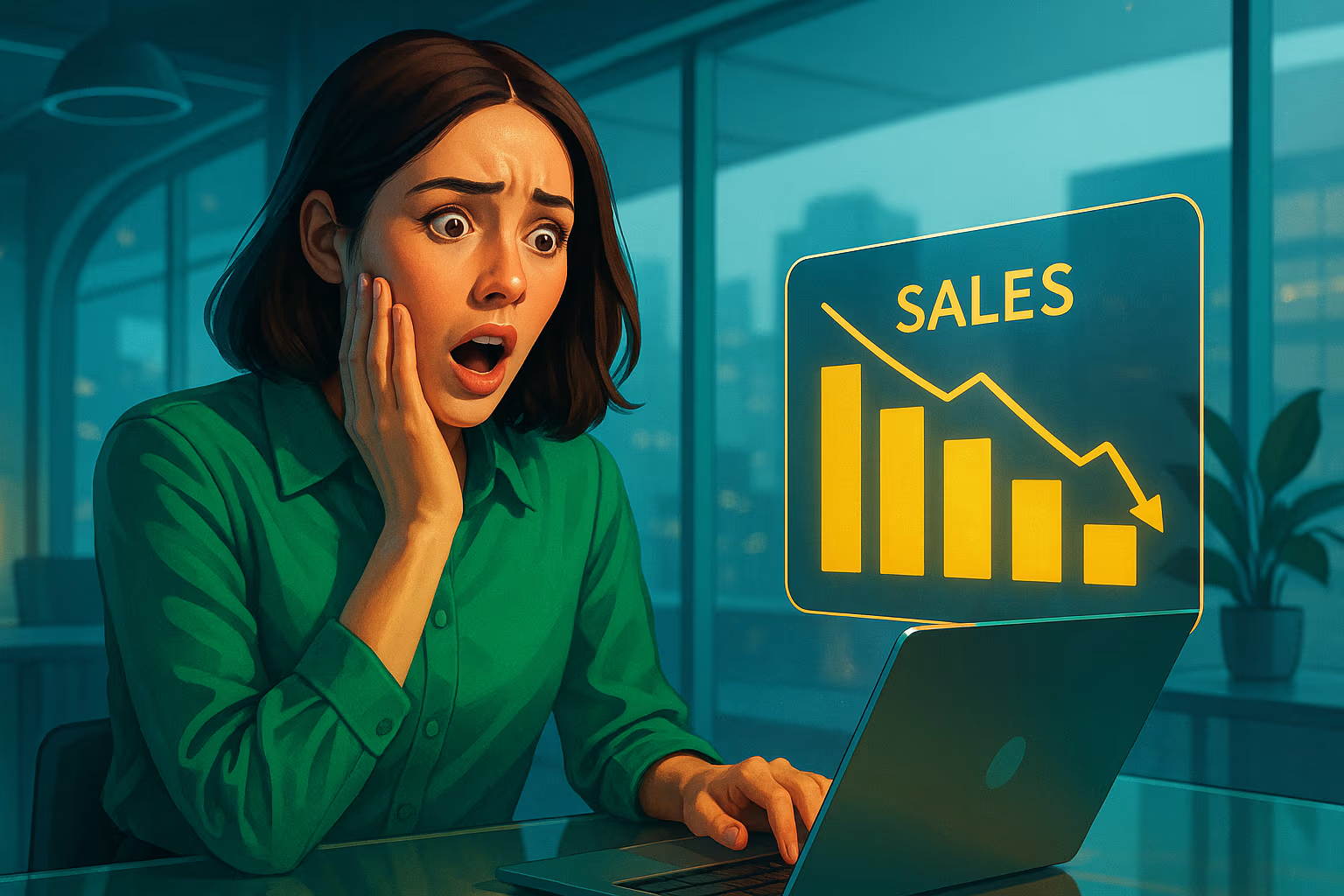
Prime Day 2025 – Amazon’s Biggest Event Yet
Amazon Prime Day 2025 shattered records during its four-day run (July 8–11, 2025). This year’s Prime Day was extended to 4 days (double the usual length), and Amazon touted it as the “biggest Prime Day event ever,” with more items sold than any previous Prime Day period retaildive.comretaildive.com. Prime members around the world took advantage of millions of deals across 35+ product categories, from electronics and beauty to household essentials aboutamazon.com aboutamazon.com. Customers saved billions of dollars on discounted products, making it a win for consumers and a critical sales period for sellers.
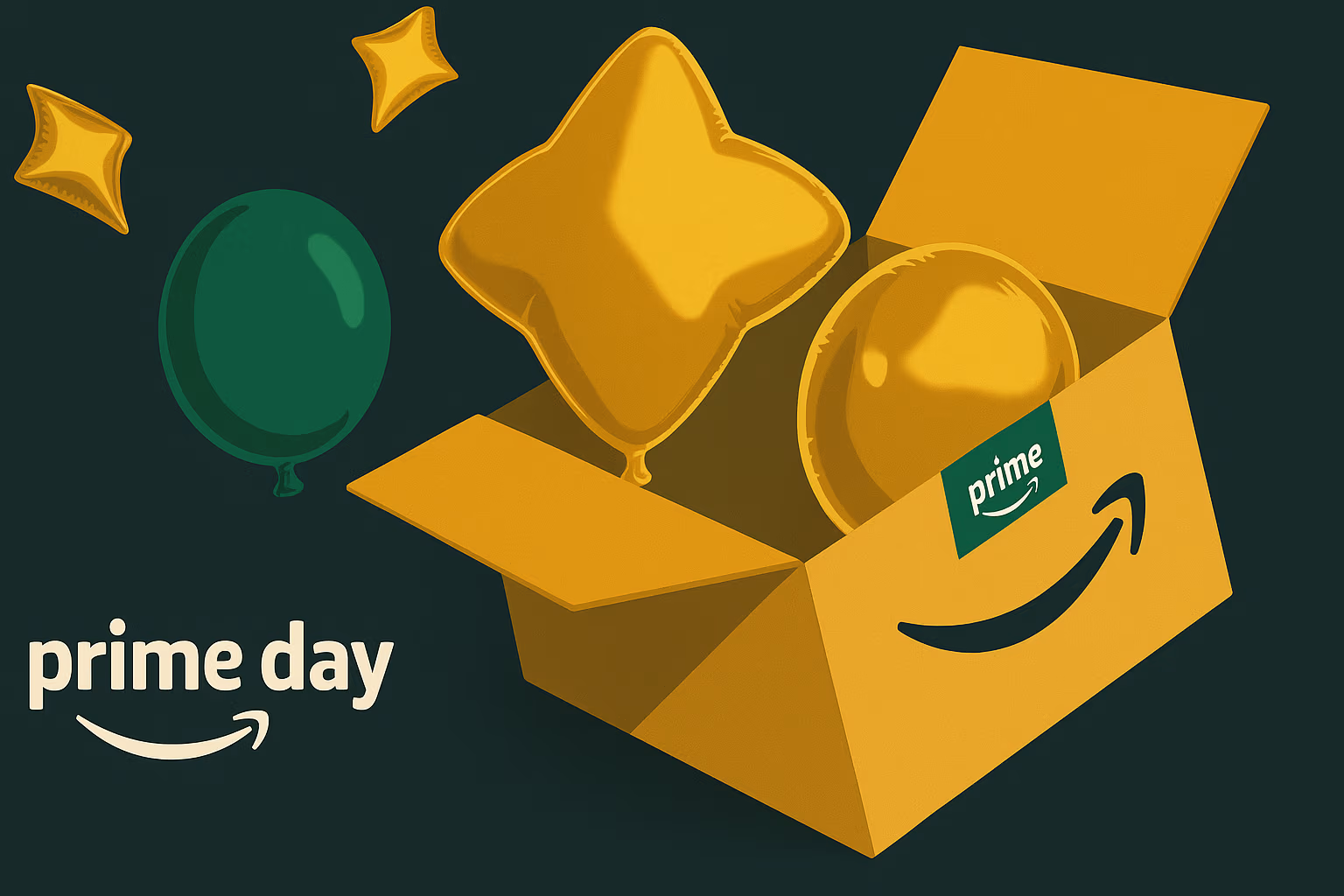
By the numbers, Prime Day 2025 set new benchmarks in e-commerce:
- $24.1 billion – Total U.S. online spending during Prime Day week, up 30.3% year-over-year techcrunch.com. Adobe Analytics equated the four-day haul to “two Black Fridays” worth of sales in one event techcrunch.com. (Adobe had forecasted $23.8B, but actual spend slightly exceeded expectations techcrunch.com.)
- 375+ million items sold – While Amazon didn’t disclose an official item count for 2025, last year Prime members worldwide bought over 375 million items (up from 300 million in 2022), so 2025 likely surpassed that fortune.com. Popular products this year included Apple AirPods Pro 2, Alexa devices (e.g. Fire TV Stick, Ring Doorbell), and everyday essentials like skincare masks and dish soap aboutamazon.com.
- Average order size: $53.34. Average household spend: ~$156 over the event retaildive.com. Nearly two-thirds of Prime households placed 2 or more orders, indicating shoppers returned for multiple bites at the apple retaildive.com. Consumers largely focused on smaller-ticket necessities and consumables, with many items under $20, rather than splurging only on big-ticket electronics retaildive.com incrementumdigital.com.
- Extended format impacts: With 4 days of deals, total volume grew but daily peaks flattened. Day 1 still saw the highest sales (about 36% of the event’s volume), but Days 2–4 were more evenly spread out acadia.io acadia.io. Overall sales rose ~4.9% compared to the combined equivalent period in 2024retaildive.com – a modest growth rate reflecting the longer event (anything less would have been disappointing given twice the lengthretaildive.com retaildive.com). However, the extended timeframe gave shoppers more leeway to buy at their own pace, and gave Amazon double the opportunity to earn advertising revenueretaildive.com.
- Competitive retail “Prime Week”: Prime Day’s influence now extends beyond Amazon. Major retailers ran overlapping summer sales – e.g. Walmart’s “Deals” event lasted 6 days (July 8–13), targeting both in-store and online shopperscarbon6.io, and Target held a week-long “Circle Week.” Even emerging platforms like TikTok Shop joined in with a 13-day salecarbon6.io. The result is a mid-July retail shopping frenzy industry-wide, not just on Amazon’s sitecarbon6.io carbon6.io.
AI Takes Center Stage: The Rise of Rufus (Amazon’s Shopping Chatbot)
One of the standout stories of Prime Day 2025 is how AI-powered shopping assistants are transforming customer behavior. Amazon’s new conversational AI chatbot “Rufus” – a generative AI shopping assistant integrated into Amazon’s app and website – played a significant role in product discovery this Prime Dayaboutamazon.com. Rufus was launched in late 2023/early 2024 as an “expert shopping assistant” trained on Amazon’s vast catalog, reviews, and web data to answer shoppers’ questions, provide product recommendations, and even compare itemsaboutamazon.com aboutamazon.com. Now rolled out to all U.S. customers, Rufus lets shoppers ask things like “What are the differences between trail and road running shoes?” or “What are good gifts for Father’s Day?” and get interactive, tailored advice without leaving the Amazon search barecomtent.ai aboutamazon.com.
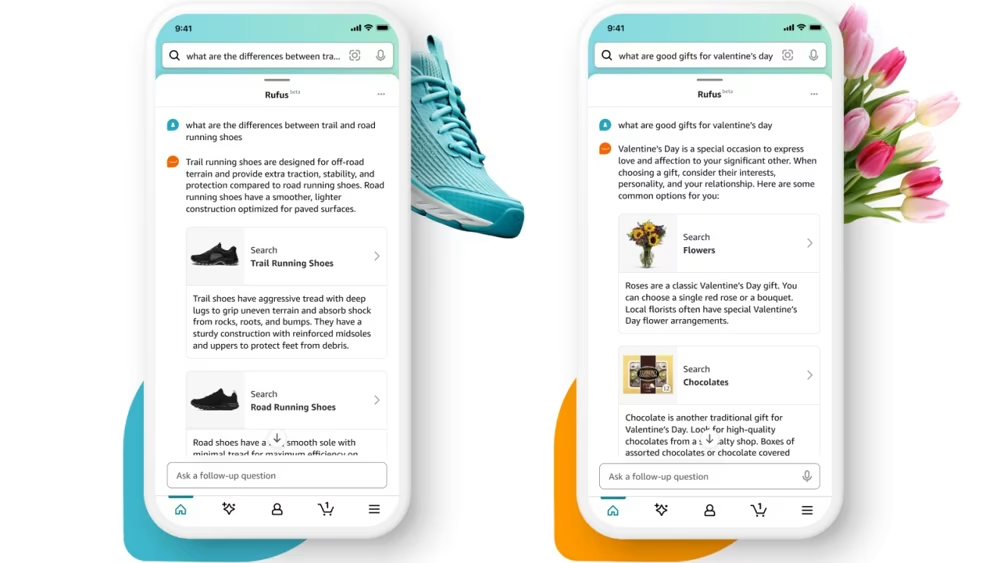
The adoption of AI chatbots for shopping skyrocketed in the past year: According to Andreessen Horowitz research, 60% of U.S. adults used an AI chatbot (like ChatGPT or Amazon’s Rufus) for product research in the last 30 days ecomtent.ai. Amazon itself clearly believes AI-assisted shopping is the future – it even started integrating Rufus into the main search bar on Amazon’s site, making the AI a core part of the shopping experience ecomtent.ai. During Prime Day, this trend was highly visible:
- Heavy usage on Prime Day: In beta, Amazon revealed Rufus had already helped facilitate “hundreds of millions of purchases” ecomtent.ai. By October 2024, Rufus was handling an estimated 274 million queries per day (~13.7% of all Amazon searches) ecomtent.ai ecomtent.ai. This share was expected to reach 25–35% by end of 2025 as more customers turn to conversational search ecomtent.ai ecomtent.ai. Prime Day likely pushed these numbers even higher. In fact, Amazon had to massively scale its AI infrastructure for the Prime event – deploying 80,000 AWS Inferentia and Trainium AI chips to process ~3 million tokens per minute for Rufus queries during Prime Day ecomtent.ai. Adobe Analytics reported that “GenAI” traffic to retail sites (from chatbots, AI-driven browsers, etc.) jumped 3,300% year-over-year during Prime Day 2025 techcrunch.com. While AI-driven shopping traffic is still a small fraction of total e-commerce, such 33× growth in one year underscores how quickly consumers are embracing new AI tools.
- Impact on conversion: Early results show mixed reviews on Rufus’s performance, but Amazon insists it improves the shopping experience and boosts sales. The chatbot can instantly surface product details, answer questions like “Is this TV mount compatible with drywall?” by parsing specs and reviews, and guide indecisive shoppers to suitable options – which can increase confidence and conversion rates. Amazon executives noted that Rufus and other AI features “meaningfully improve how easy it is for customers to find the best products… [helping] them make more informed purchase decisions.” aboutamazon.com aboutamazon.com By resolving doubts in real-time, an intuitive chatbot can turn more browsers into buyers. Amazon has even observed that Rufus-driven queries tend to steer shoppers toward Amazon’s own brands or high-margin items (since the AI often highlights what it “knows” best), which the company believes will “boost profits” carbon6.io.
- Sellers must optimize for AI discovery: With such a large and growing chunk of searches happening via Rufus or other AI assistants, sellers need to adapt their marketplace strategy for AI-era shopping. This means ensuring your product listings are rich in the content AI looks at – comprehensive titles and descriptions, robust FAQs and customer Q&A, and lots of positive reviews. Amazon is actually using generative AI to help sellers enhance listings (auto-generating more engaging titles, bullet points, and descriptions) to make product info more AI-friendly aboutamazon.com. Some brands are already proactively “optimizing for Rufus” – and seeing big payoffs. Ecomtent (an AI e-commerce consultancy) noted case studies where sellers who tailored content for AI search saw their sales rank improve dramatically (cutting Best Seller Rank in half) and a boost in sales ecomtent.ai. In short, AI-driven search is becoming a new battleground for visibility. Sellers who embrace AI tools – whether Amazon’s Rufus or chat-based search on Bing/Google – and fine-tune their content accordingly will have an edge in capturing those AI-guided customers.
(Tip: Kensium’s marketplace team can help audit your Amazon listings and optimize them for AI-driven search results, ensuring your products are surfaced by tools like Rufus. We stay on top of Amazon’s latest AI features so you don’t get left behind.)
Prime Day Advertising Trends: Ad Dollars, ROAS, and Strategies
Prime Day isn’t just about organic sales – it’s also the Super Bowl of Amazon advertising. With millions of deal-hungry shoppers flooding the site, competition for visibility is fierce. Brands significantly ramped up their ad spend this year to win Prime Day eyeballs. Here are the key advertising takeaways:
- Record ad spend (and higher costs): Advertisers poured unprecedented budgets into Prime Day 2025 campaigns. Amazon urged brands to double their daily ad spend during the event (100% boost on Prime Day days, plus +25% in the week before and after) carbon6.io. Many brands heeded this call – early data from 2024 showed total Amazon ad spend in July jumped ~42% vs the prior year teikametrics.com teikametrics.com, and 2025 likely saw further increases. This surge in bidding drove up costs: the average cost-per-click (CPC) on Amazon hit about $1.03 in 2024, up ~7% YoY teikametrics.com, and likely climbed higher in 2025 due to intense Prime Day competition. Paid search ads accounted for ~28.5% of U.S. e-commerce sales during Prime Day techcrunch.com – a huge chunk – showing how much traffic is driven by sponsored listings. For sellers, this meant higher spend was required to maintain share-of-voice, squeezing ad efficiency if not managed carefully.
- ROAS: slightly lower, but still worthwhile. With rising CPCs, Return on Ad Spend (ROAS) saw some pressure. Industry analysis showed Amazon advertisers’ ROAS dipped from ~$5.09 in 2023 to $4.69 in 2024 on average (a ~7.8% decline) teikametrics.com, as ad costs grew faster than the sales attributable. Early reports suggest 2025 ROAS held steady or improved slightly in some areas thanks to higher conversion rates: one agency noted Prime Day 2025 ROAS was up ~12.8% overall versus last year, around $4.59 overall for their clients acadia.io. Essentially, sellers spent more on ads, but also generated more sales – total ad-attributed revenue reportedly jumped ~468% during Prime Day 2024 globally, on 496% higher spend skai.io. The takeaway: even if profit per ad dollar was a bit lower, the sheer volume of Prime Day traffic still makes well-run campaigns lucrative. The key is efficiency – maximizing conversions for those pricier clicks. (Notably, Amazon’s own data shows tactics matter: U.S. advertisers who used multiple targeting types in Sponsored Product campaigns saw 5.3% higher ROAS and 19% higher conversion rates than those using a single targeting approach advertising.amazon.com.)
- Advertising strategies for Prime Day success: With a longer 4-day event, advertisers had to pace budgets and bids strategically. Many brands learned that Day 1 would be big, but maintaining some gas in the tank for Days 3–4 was crucial as shopper interest resurged toward the end acadia.ioacadia.io. Budget pacing was critical so campaigns didn’t go dark early – doubling daily budgets as Amazon suggested, but also monitoring performance in real time. Amazon noted that combining deals with ads yields outsized results: products running a Prime Day deal and supported by Sponsored ads saw on average 12× higher sales than similar products with deals but no ads advertising.amazon.com. In practice, successful brands blanketed Prime Day with a full-funnel approach – Sponsored Products to capture deal-seekers on search results, Sponsored Brands and Videos for discovery, and even Amazon DSP ads off-site to retarget and draw shoppers in. Amazon also temporarily boosted influencer referral commissions (doubling rates in some categories) around Prime Day carbon6.io, which led to a flood of influencer promotions – and it paid off: social media influencers drove nearly 20% of online sales during Prime Day, converting shoppers 10× more effectively than standard social media ads techcrunch.com. Many brands partnered with influencers to amplify their deals, essentially outsourcing some marketing to savvy creators (beauty and electronics were notable areas where influencer promo surged carbon6.io).
- ROI mindset: Despite Amazon’s push to spend big, smart sellers focused on ROI, not just spend. Experts cautioned brands to only scale budgets if the returns justify it – e.g. closely track ACOS/ROAS during the event and dial back if a campaign is overspending carbon6.iocarbon6.io. Some brands even reallocated portions of budget to Walmart or Target ads to catch spillover traffic during those retailers’ parallel sales carbon6.io. The consensus is that Prime Day is crucial, but not at any cost – disciplined optimization and cross-channel strategy are key to avoid diminishing returns. For instance, if CPCs on certain keywords became exorbitant on Amazon, a brand might get better ROI running Google Shopping or Facebook ads on their Prime deals, or capturing late shoppers on Day 5 via retargeting. The bottom line: advertising can make or break your Prime Day, so having a data-driven game plan is essential. (If you need assistance managing your Amazon Advertising or interpreting metrics like ROAS/ACOS, talk to our Marketplace experts – we can help craft a strategy that maximizes your results on big events like this.)
Does Prime Day Hurt Brick-and-Mortar? (Not Quite)
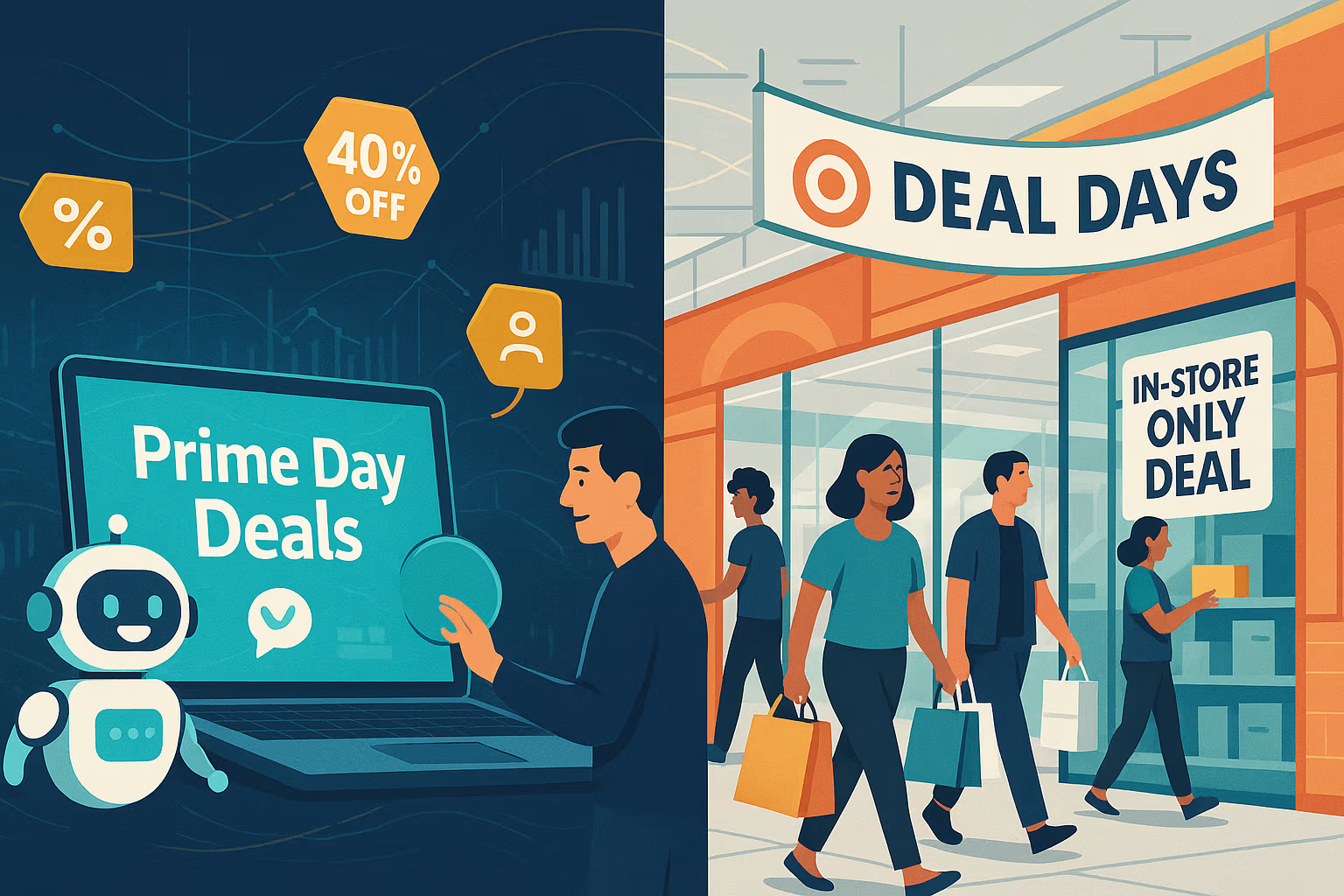
One might assume that a massive online event like Prime Day siphons sales away from physical retailers. However, historical data shows Prime Day has minimal negative impact on brick-and-mortar stores’ foot traffic – and can even boost it under the right circumstances. Prime Day 2025’s explosion of competing sales actually illustrates how online and offline can both win during this retail frenzy:
- Other retailers ride the wave: Rather than suffering, many traditional retailers have learned to leverage Prime Day’s hype by running their own promotions. As noted, Walmart, Target, Best Buy, and others all scheduled big sales overlapping with Prime Day carbon6.iocarbon6.io. Because these sales were open to all shoppers (not just members) and often emphasized in-store deals as well, they drew people into physical stores. For example, in 2024 Target saw success with its “Deal Days” and this year expanded “Circle Week” with special in-store discounts for teachers and students, driving foot traffic. In 2021, Target experienced a 13.9% spike in store visits during Prime Week by running a competing sale that started a day early sensormatic.com. Shoppers will still go to stores if the right product at the right price is offered – even in the middle of Amazon’s online blitz.
- No significant foot traffic loss: Research by retail analytics firm Sensormatic found that Prime Day has “virtually no effect” on overall brick-and-mortar shopper traffic sensormatic.comsensormatic.com. For instance, during Prime Day 2018 (which saw online sales jump 75% YoY), traditional retailers still saw a slight +0.4% increase in store traffic nationally sensormatic.com. In other words, Prime Day seems to create additional retail spending rather than just cannibalizing other channels. It “creates e-commerce shoppers where few would ordinarily exist” (i.e. stimulates incremental demand) more than it pulls people out of stores sensormatic.com. Many consumers enjoy deal-hunting both online and in-store if given the chance. So brick-and-mortar retailers shouldn’t view Prime Day as a pure threat – instead, it’s an opportunity if they play along.
- Omnichannel approach: The smartest retailers now treat mid-July as a “Summer Black Friday” week across all channels. They use online deals to drive store pickup, offer store-only doorbusters to get feet in the door, and capitalize on the general deal-seeking mood. Even Amazon itself uses Prime Day to boost its physical retail: Whole Foods Market (owned by Amazon) ran 50% off grocery promotions during Prime Day aboutamazon.com, drawing Prime members into stores for ice cream, produce, and more. Far from killing brick-and-mortar, Prime Day has forced the evolution of brick-and-mortar strategy – pushing retailers to integrate their online and offline offerings and focus on customer experience (some stores host special events, freebies, or “Prime Day counter-sales” to piggyback on the excitement).
In short, Prime Day’s impact on brick-and-mortar sales is not zero-sum. With the right approach, physical retailers can benefit from the Prime Day halo. Those who offered compelling deals saw increases in sales during the period, while those who sat out might have missed an opportunity but generally didn’t lose existing customers. It appears the rising tide of Prime Day lifts all boats – or at least, it doesn’t sink the brick-and-mortar ones.
Looking Ahead: Lessons for Sellers and Next Steps
Prime Day 2025 underscored several trends that every Amazon seller and e-commerce brand should note:
- Plan for an extended “Prime Week”: Amazon may continue experimenting with longer events (and they’ve already announced a fall “Prime Big Deal Days” event). Sellers should be prepared not just for 48 hours of frenzy, but a marathon. This means stocking enough inventory, using tools like Prime Exclusive Discounts or coupons spread over multiple days, and pacing your promotions so you can capture sales throughout. The data from this year shows even brands that didn’t run official Prime Day deals still saw a +46% sales lift vs. normal during the week, thanks to the surge in traffic acadia.io. So everyone with a presence on Amazon stands to gain – as long as you’re in stock and your listings are optimized.
- Embrace AI and new discovery methods: The rise of AI chatbots like Rufus means product search is changing. Ensure your product content is AI-ready – answer common customer questions in your listings, encourage reviews that highlight key features (since AI will scrape those), and consider using Amazon’s new AI-generated content tools to improve your descriptions. Also, monitor how your products appear in AI-driven results (for example, try asking Rufus or Alexa about products in your category). Much like brands adapted to voice search a few years ago, adapting to conversational search will be crucial for staying visible. If Amazon’s AI is “the new SEO,” you want to rank at the top of it!
- Advertise smartly (not just heavily): Prime Day 2025 proved that ads are indispensable, but also that throwing money blindly isn’t a winning strategy. It’s important to analyze performance – which keywords or products yielded the best ROAS, how much did you spend vs plan, where did you see diminishing returns? Use those insights to refine your advertising game plan for the next big event. For example, maybe Sponsored Brands videos gave you a better lift than expected, or perhaps you overspent on Day 1 keywords that everyone was bidding on. Next time, you might redistribute budget to longer-tail keywords or increase bids on Day 3 when some competitors taper off. Always balance the short-term sales spike with long-term profitability and customer acquisition goals.
- Leverage Prime Day momentum for Q4: The mid-year Prime event is also a springboard for the rest of the year. Many sellers use Prime Day to gain new customers, earn more reviews, and improve sales rank, which pays dividends during the holiday season. The halo effect (spike in sales rank, also in ad ranking quality scores, etc.) from strong Prime Day sales can boost your organic placements afterward. It’s wise to follow up with those new customers – for instance, using Amazon’s Brand Follow features or post-Prime Day remarketing via Amazon DSP to re-engage shoppers who bought or browsed your products. Essentially, think beyond Prime Day: view it as one big step in an ongoing growth strategy, not just a 4-day silo.
Talk to Us About Your Marketplace Account
Prime Day 2025 has come and gone, but its lessons are here to stay. The e-commerce landscape is evolving – from AI-driven shopping to intensifying competition and omnichannel dynamics. Is your business ready to thrive in this environment? Whether you’re looking to optimize your Amazon listings with AI insights, maximize advertising ROI, or develop a year-round marketplace strategy, Kensium is here to help. 🤝 Contact us to discuss your Marketplace Account and learn how our e-commerce experts can partner with you to boost your online sales. Let’s take your Amazon strategy to the next level so you can turn events like Prime Day into even bigger opportunities for growth.








.png)



